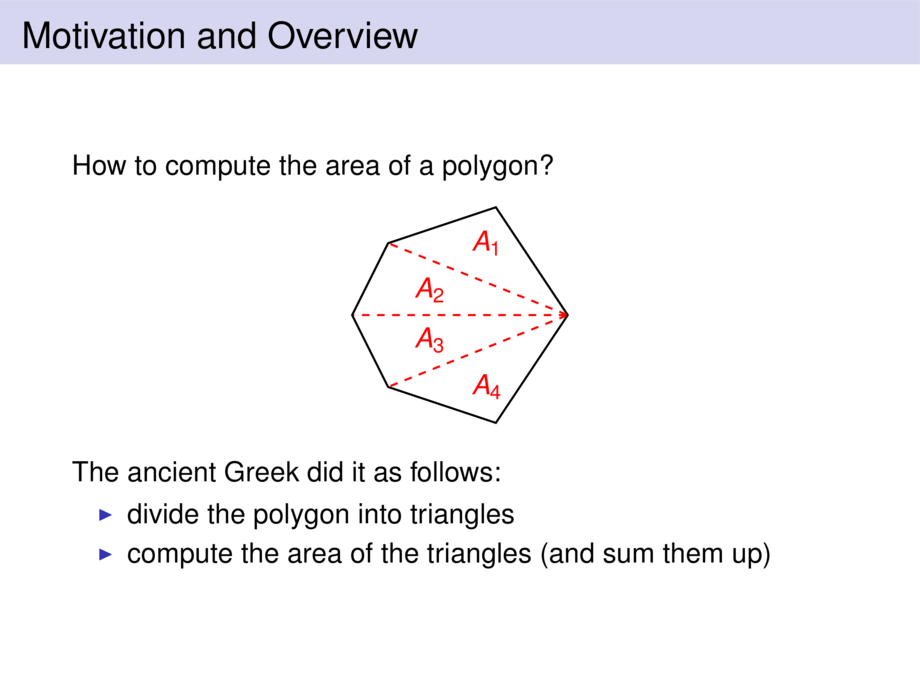



































































































5/60
\begin{frame}
\frametitle{Motivation and Overview}
How to compute the area of a polygon?
\begin{center}
\begin{tikzpicture}[default,scale=.5]
\begin{scope}[inner sep=0,outer sep=0]
\draw (0,0) -- node[at start] (1) {}
++(-3,-1) -- node[at start] (2) {}
++(-1,-2) -- node[at start] (3) {}
++ (1,-2) -- node[at start] (4) {}
++(3,-1) -- node[at start] (5) {} node[at end] (6) {}
++ (2,3) --
cycle;
\end{scope}
\begin{scope}[cred,dashed]
\mpause[2]{
\draw (6) -- node[pos=.7] (m1) {} node[pos=.5] (m1') {} (2);
\draw (6) -- node[pos=.7] (m2) {} (3);
\draw (6) -- node[pos=.7] (m3) {} node[pos=.5] (m3') {} (4);
}
\mpause[3]{
\node at ($(1)!.5!(m1')$) {$A_1$};
\node at ($(m1)!.5!(m2)$) {$A_2$};
\node at ($(m2)!.5!(m3)$) {$A_3$};
\node at ($(m3')!.5!(5)$) {$A_4$};
}
\end{scope}
\end{tikzpicture}
\end{center}
\pause
The ancient Greek did it as follows:
\begin{itemize}
\pause
\item divide the polygon into triangles
\pause
\item compute the area of the triangles (and sum them up)
\end{itemize}
\end{frame}

